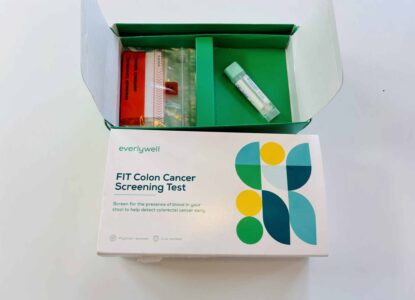Folic Acid Supplements, MTHFR, and Pregnancy: What You Need to Know
Genes Mentioned

Contents
- What is folate and why do you need it if you’re pregnant or trying to conceive?
- Are you at risk for folate deficiency?
- How much folate do you need when TTC or pregnant?
- When to take folate
- Folate vs. Folic Acid – what’s the difference?
- CDC: MTHFR carriers should take folic acid when pregnant
- What does it all mean for folate and pregnancy?
- The takeaway
If you’re trying to get pregnant, a good folate intake is essential. Why? Because we need more folate during times of rapid growth and development, such as in pregnancy. If your folate status is too low in pregnancy, your growing baby will be at far greater risk for neural tube defects, heart defects, cleft palate, and other serious health issues, and you’re also more likely to miscarry.
In this post, I discuss how the body uses folate and why it helps reduce the risk of birth defects. I’ll look at how much folic acid to take during pregnancy, and what it means if, like me, you have a common variant in the MTHFR gene that changes how you metabolize folic acid.
What is folate and why do you need it if you’re pregnant or trying to conceive?
Folate (vitamin B9) is vital for DNA replication, amino acid synthesis, and a range of enzymatic processes in the body. Folate deficiency during pregnancy can affect the health of the birth parent, causing anemia and peripheral neuropathy. It can also cause spina bifida and other congenital abnormalities in the fetus. A lack of folate in pregnancy can even increase the risk of spontaneous abortion or miscarriage. Why? Because miscarriage is often the body’s way of terminating a pregnancy where the fetus has significant abnormalities. There’s no doubt that folate is an important vitamin, especially in pregnancy and if you’re trying to conceive (TTC). In Canada and the US, birth abnormalities have been dramatically reduced thanks to folic acid fortification of staple foods, which was made mandatory in 1998.1 Shortly after folic acid fortification came into effect in Canada and the US, researchers observed a significant increase in the concentrations of erythrocyte (blood cell) folate among women of childbearing age, as well as a decrease in neural tube defects in newborns.23 Folic acid fortification of foods is now mandated by law in at least 53 countries. Unfortunately, the implementation of fortification is somewhat haphazard. So much so that even in countries that fortify foods, many people still do not get enough folate to help protect maternal and fetal health in pregnancy.4
Are you at risk for folate deficiency?
If you don’t eat a lot of processed foods, and tend to skimp on your leafy greens, there’s a decent chance you’re missing out on folate. And, even if you do eat fortified foods and leafy greens, you may have a higher need for folate if you:
- Have previously had a child with a neural tube defect, cleft palate, or certain heart defects
- Are on dialysis for kidney disease
- Have sickle cell disease
- Drink alcohol regularly (more than one drink a day on average)
- Have liver disease
- Are on certain medications for epilepsy, type 2 diabetes, lupus, psoriasis, rheumatoid arthritis, asthma, or inflammatory bowel disease.
People at high risk of an NTD include those with a personal or family history of NTDs and/or anyone taking medications that deplete folate, such as anticonvulsant drugs. In general, however, it is now widely acknowledged that most people struggle to get enough folate from diet alone to meet the increased needs of pregnancy. As such, folate supplementation is necessary to support a healthy pregnancy.
How much folate do you need when TTC or pregnant?
The US National Institutes of Health (NIH) and Institute of Medicine (IOM) recommend the following daily intakes:
- 400 µg to 1000 µg folic acid daily prior to conception
- 600 µg of folic acid daily during pregnancy
- 500 µg of folic acid daily during lactation.
If you’re at high risk of having a child with a neural tube defect (NTD), the NIH/IOM recommend you take 5 mg of folic acid, commencing prior to conception and continuing throughout pregnancy and postpartum. You should not, however, continue taking this high of a dose after pregnancy, unless your doctor says otherwise.
When to take folate
Recommendations differ for folate in pregnancy, and it’s good to start taking folate supplements well before TTC. If you can, begin taking a good quality prenatal vitamin or folic acid supplement at least a year prior to conception. Research shows that this could reduce your risk of spontaneous pre-term birth by up to 78%.5 For some people, 800 mcg of folic acid per day from fortified foods and supplements is typically sufficient to maintain adequate active folate. If you’re TTC and have no known health risks:
- Eat a diet rich in folate
and
- Take a folate supplement providing 400-1000 mcg per day for at least 2-3 months prior to becoming pregnant
- Continue this dose throughout pregnancy and while nursing your infant.
If you have a family or personal history of neural tube defects or other high-risk factors:
- Eat folate-rich foods and supplement with 5 mg (5000 mcg) of folate daily
- Begin taking folate supplements at least 3 months prior to conception
- Continue until 10-12 weeks post-conception
- After the 12th week of pregnancy, take 400 mcg to 1000 mcg daily
- Continue taking 400-1000 mcg while nursing.
Other things to consider
It’s also important to note that increased folate intake can mask symptoms of vitamin B12 deficiency. As such, it’s good to supplement with vitamin B12, as methylcobalamin, in pregnancy. The body’s demand for vitamin B12, iron, and folate increase in pregnancy, in part because the body has to dramatically increase its production of red blood cells and hemoglobin in a process called erythropoiesis. Now you know why folate is important when TTC or pregnant, and how much to take, what about if you have a troublesome variant of the MTHFR gene? To answer this question, you’ll need to know the difference between folate and folic acid.
Folate vs. Folic Acid – what’s the difference?
Folic acid and folate are not interchangeable terms. Folate is an umbrella term that encompasses several related compounds in the vitamin B group that share a similar structure. Folic acid is a synthetic form of folate. Folic acid became popular because it is stable in supplement form and can be used to fortify foods. The folate found naturally in food is not stable enough to be used in supplements (without modification) or for fortification. And, the amount of folate can vary considerably in the diet, making supplements a convenient way to ingest a minimum amount of folate each day.
See also: Methylfolate vs. folic acid
Folate, folic acid and 5-MTHF
Food folate is found in leafy green vegetables, legumes, citrus fruit, and in egg yolks and liver. To use either food folate or folic acid, your body has to convert these into a metabolically active form of folate. L-5-Methyltetrahydrofolate (L-methylfolate, or 5-MTHF) is the predominant active form of the nutrient in humans and is created through the activity of several enzymes, including one called methylenetetrahydrofolate reductase (MTHFR).
CDC: MTHFR carriers should take folic acid when pregnant
The most common mutation in the MTHFR gene is a C<T allele switch from the wild-type 677CC. MTHFR C677T is a very common variant, with 30% of the population carrying at least one copy. Those with the wild-type of the MTHFR gene have uninhibited MTHFR enzyme activity, so they are likely to process folic acid into 5-MTHF very efficiently.
If you carry two abnormal copies of this gene (homozygous C677T), MTHFR enzyme activity is decreased by around 65%. For heterozygous 677CT individuals, there’s a loss of activity estimated at 30%. Another variant (MTHFR 1298A->C), may reduce MTHFR activity by about 32% compared to the wild-type of the gene.6789 Fortunately, there are some good ways to support adequate folate status even if you have an MTHFR mutation. These include:
- Increasing your intake of folate-rich foods
- Reducing inhibitors of folate status, such as alcohol consumption.
Interestingly, results from short-term studies (30-90 days on average) found that people with MTHFR mutations have a detectable and significant increase in levels of circulating un-metabolized folic acid when taking a folic acid supplement. 101112 However, longer studies show that levels of un-metabolized folic acid start to drop with time, so this may not be a concern.13 This suggests that the body may increase folic acid metabolism and decrease levels of circulating un-metabolized folic acid. This is food for thought for anyone beginning a high dose of folic acid just prior to conception. The CDC weighed in on the MTHFR issue this year and had this to say about folic acid and MTHFR polymorphisms:
You might have read or heard that folic acid is not safe if you have one or two copies of the MTHFR C677T variant. This is not true. Even if you have one or two copies of the MTHFR C677T variant, your body can safely and effectively process the different types of folate, including folic acid.
Current scientific consensus is that pregnant women, even those with MTHFR C677T, can take a folic acid supplement. More from the CDC on this issue:
You may have heard or read that if you have an MTHFR C677T variant, you should take other types of folate (such as 5-MTHF), but this is not true. Folic acid is the only type of folate shown to help prevent neural tube defects (severe birth defects of the brain or spine)
What does it all mean for folate and pregnancy?
Given what we now know about a handful of genes involved in folate metabolism, is it better to supplement with co-enzymated folate instead of folic acid prior to and during pregnancy? According to the CDC, no, the key is to make sure you are getting folic acid, which is the only type of folate shown to help prevent neural tube defects.
The takeaway
The bottom line is that folic acid supplementation is still considered best practice for anyone TTC or already pregnant. Ideally, you’d start supplementing 2-3 months prior to TTC, continuing through pregnancy and while nursing. Or, consider taking 5 mg of folic acid daily for a year prior to conception and for the first 10-12 weeks of pregnancy, and then decrease this to 400-1000 mcg of folic acid daily throughout the rest of your pregnancy. As always, before you take any supplements, be sure to talk to your health care practitioner, especially if you have existing medical conditions or are already pregnant.




Hi Leigh, thanks for the really informative article!
Do you know if the folic acid dosage is equivalent to the dosage of L-methylfolate? For example, if I am taking 5000mcg of folic acid, could I swap to 5000mcg of L-methylfolate? I can’t find any information about this anywhere.
Thanks!